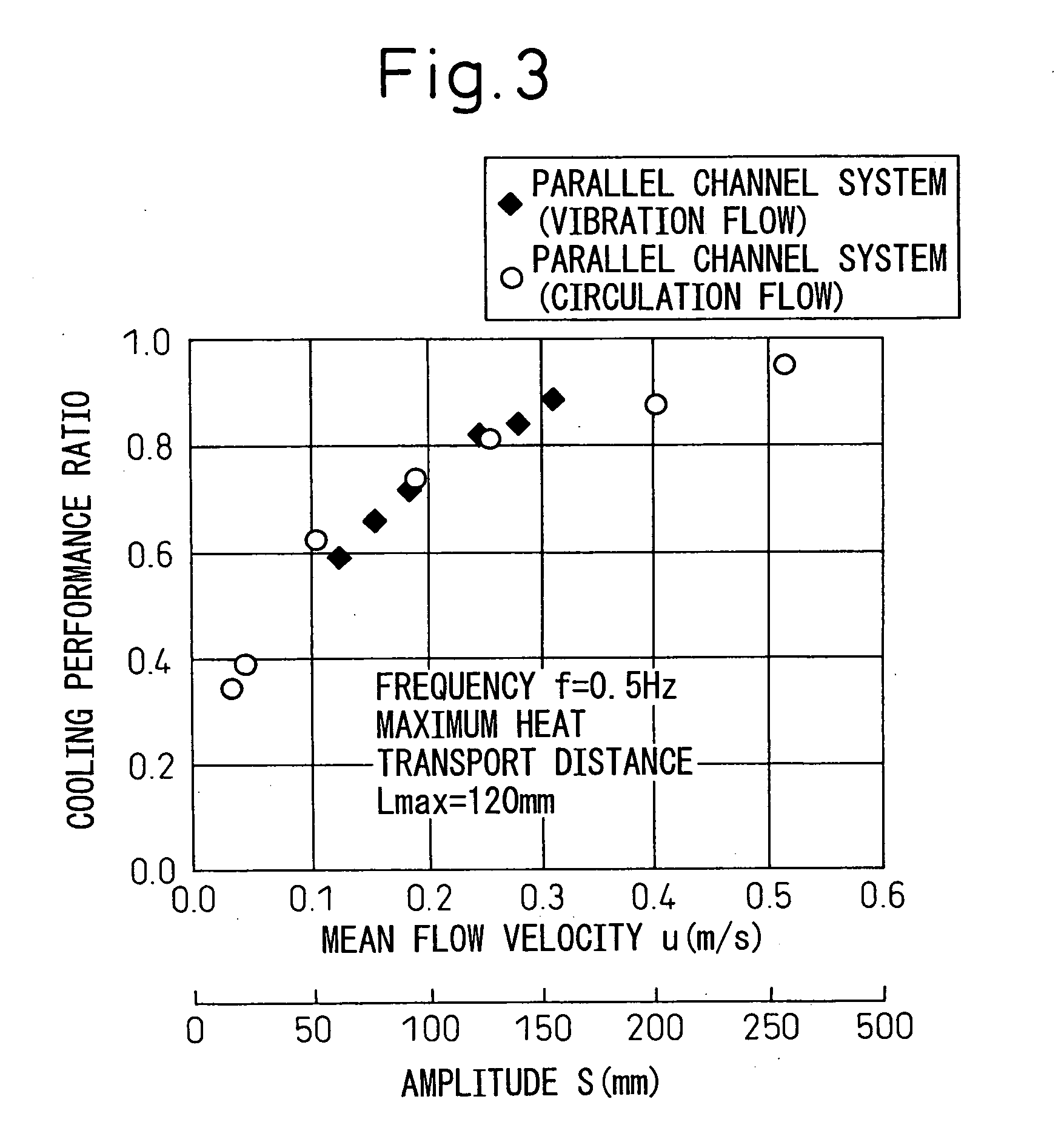Vibration-flow-type heating-body cooling device
a cooling device and flow-type technology, applied in the field of vibration-flow-type cooling devices, can solve the problems of inferior cooling performance of circulation-flow-type cooling devices, and achieve the effect of compact pump and low discharge flow ra
- Summary
- Abstract
- Description
- Claims
- Application Information
AI Technical Summary
Benefits of technology
Problems solved by technology
Method used
Image
Examples
first embodiment
[0043] A first embodiment of the present invention is explained below. FIG. 1 is a schematic configuration diagram of a heating body cooling device according to the first embodiment and FIG. 2 shows an exploded view of a tube 3 in FIG. 1, that is, a section view along the line A-A in FIG. 1.
[0044] The heating-body cooling device according to the present embodiment can be applied to cooling electronic and electrical apparatuses in a mobile phone base station, electronics and electric apparatuses of various industrial equipment (for example, a power element such as IGBT used in an inverter for controlling an industrial motor), etc.
[0045] As shown in FIG. 1 and FIG. 2, a heating body 1 such as a heating element is mounted on a base plate 2 made of a metal material having a high heat conductivity and the base plate 2 is closely fixed to the tube 3 and due to this, the heat of the heating body 1 is transferred to the tube 3 via the base plate 2. The heating bodies 1 are arranged at thr...
second embodiment
[0061] The second embodiment of the present invention is explained below. FIG. 4 is a schematic section view of a heating body cooling device according to the second embodiment and the tube 3 is shown in its exploded view. The same symbols are attached to the parts the same as or similar to those in the first embodiment and the explanation thereof is omitted here.
[0062] As shown in FIG. 4, in the present embodiment, the separator 41 within the header 4 in the first embodiment is not used and the parallel channel system is employed in which the fluids vibrate in the same phase in all of the channels 31.
[0063] In the cooling device in the present embodiment also, by setting S>=Lmax, it is possible to improve the cooling performance to the same level as that of the circulation-flow-type cooling device. Further, the structure of the header 4 can be simplified.
third embodiment
[0064] The third embodiment of the present invention is explained below. FIG. 5 is a schematic section view of a heating-body cooling device according to the third embodiment and the tube 3 is shown in its exploded view. The same symbols are attached to the parts the same as or similar to those in the first embodiment and the explanation thereof is omitted here.
[0065] As shown in FIG. 5, in the present embodiment, the number of the separators 41 within the header 4 in the first embodiment is increased and the meandering channel system is employed in which the fluids vibrate in opposite phase in neighboring channels 31.
[0066] In the cooling device in the present embodiment also, by setting S>=Lmax, it is possible to improve the cooling performance to the same level as that of the circulation-flow-type cooling device.
PUM
 Login to View More
Login to View More Abstract
Description
Claims
Application Information
 Login to View More
Login to View More - R&D
- Intellectual Property
- Life Sciences
- Materials
- Tech Scout
- Unparalleled Data Quality
- Higher Quality Content
- 60% Fewer Hallucinations
Browse by: Latest US Patents, China's latest patents, Technical Efficacy Thesaurus, Application Domain, Technology Topic, Popular Technical Reports.
© 2025 PatSnap. All rights reserved.Legal|Privacy policy|Modern Slavery Act Transparency Statement|Sitemap|About US| Contact US: help@patsnap.com



